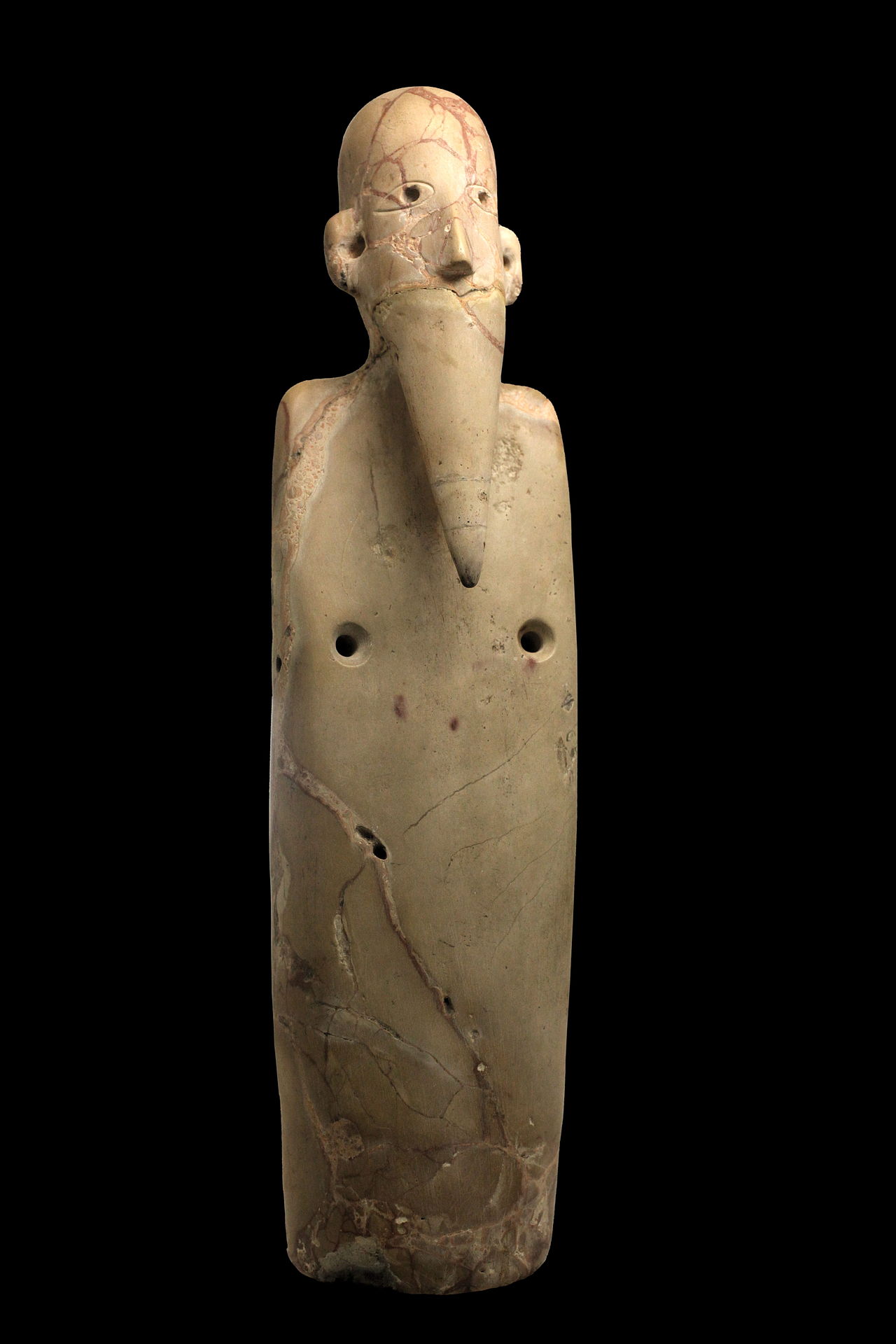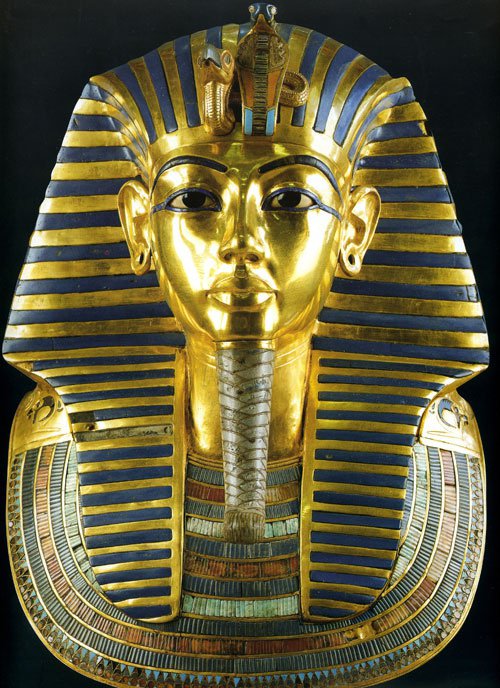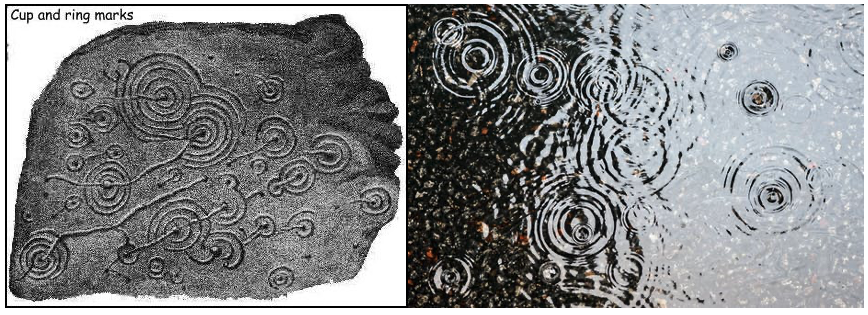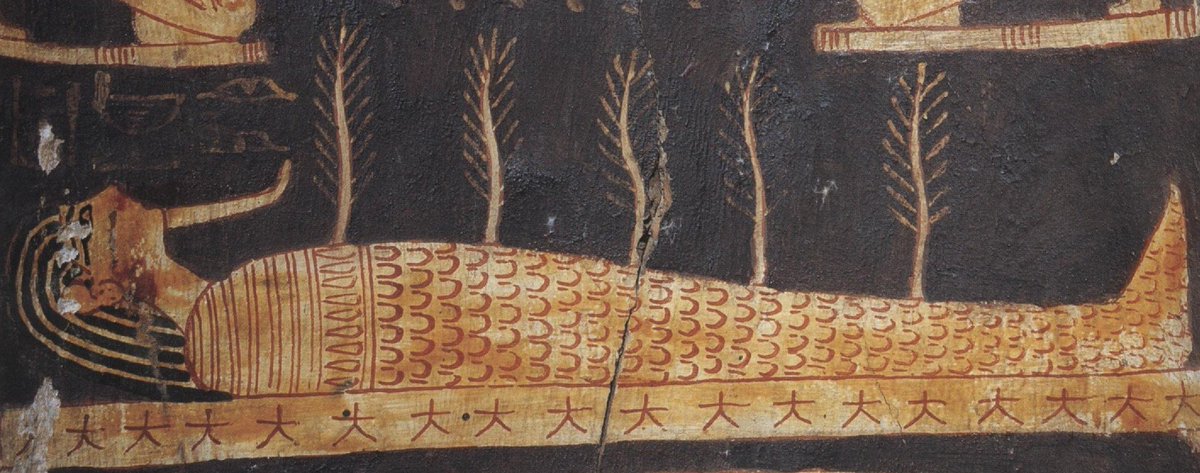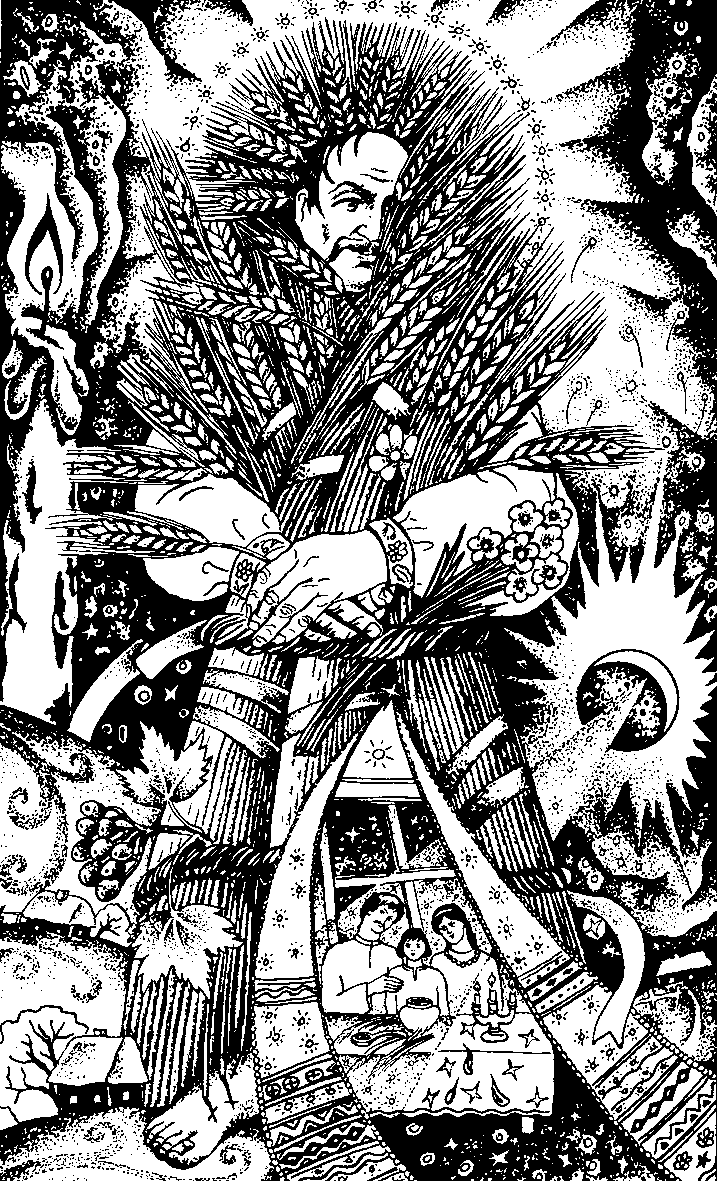The beard of Osiris
© by Goran Pavlovic © tłumaczenie Czesław Białczyński
Figurine of a bearded man by the Naqada I culture, 3800–3500 BC, from Upper Egypt. Pic by Rama.
Today I came across this article „Heliopolis and the Solar Cult in the Third Millennium BC”
Dziś natknąłem się na artykuł „Heliopolis i kult słońca w trzecim tysiącleciu p.n.e.”
In it I read about the „Souls of Heliopolis„, „Souls of Hierakonpolis” and Pharaohs as great prophets, great seers, who received their sacred knowledge and legitimacy from their ancestors…all the way to the procreator god…”
Czytałem w nim o „Duszach Heliopolis”, „Duszach Hierakonpolis” i faraonach jako wielkich prorokach, wielkich widzących, którzy otrzymali świętą wiedzę i legitymację od swoich przodków… aż po boga-prokreatora…
And this got me thinking: Was ancestral worship at the core of the early Ancient Egyptian religion? Is this why Pharaohs wore false beards?
I to dało mi do myślenia: czy kult przodków był rdzeniem religii wczesnego starożytnego Egiptu? Czy dlatego faraonowie nosili sztuczne brody?
Apparently, Pharaohs (divine rulers) wore false beards to signify their status as a living gods.
Najwyraźniej faraonowie (boscy władcy) nosili sztuczne brody, aby podkreślić swój status żywych bogów
And not any god. Osiris. In ancient Egypt, Osiris was considered as being the perfect example for pharaohs…
I nie chodziło o byle boga. O Ozyrysa. W starożytnym Egipcie Ozyrys był uważany za przykład doskonały, za wzór dla faraonów…
Thus, in order to get closer to and bond with the perfect pharaoh Osiris, his pharaonic successors wore a false beard to imitate his appearance. But Osiris didn’t actually have a real beard himself…
Dlatego też, aby zbliżyć się do doskonałego wzorca faraona Ozyrysa i nawiązać z nim więź, jego faraońscy następcy nosili sztuczną brodę, imitującą jego wygląd. Ale Ozyrys sam nie miał prawdziwej brody…
Osiris, wore a false beard in his role as ruler of underworld while he judged the dead. Apparently, he wore the false beard „as a symbol of his great wisdom”…
Ozyrys nosił sztuczną brodę, gdy był władcą podziemi, sądząc zmarłych. Najwyraźniej nosił sztuczną brodę „jako symbol swojej wielkiej mądrości”…
Why would a beard be a symbol of great wisdom? Cause beard is a symbol of an elder, an ancestor…Someone of a great age with great experience and hence knowledge, wisdom…
Dlaczego broda miałaby być symbolem wielkiej mądrości? Bo broda to symbol starszego, przodka…Ktoś w podeszłym wieku, z ogromnym doświadczeniem, a co za tym idzie, wiedzą, mądrością…
The older you were, the wiser you became…And longer your beard grew…
Im byłeś starszy, tym mądrzejszy się stawałeś…I rosła Ci dłuższa broda…
And then you died and went to the underworld. So the underworld was full of dead ancestors with long beards…
A potem umierałeś i szedłeś w Zaświaty. Więc Zaświaty były pełne zmarłych przodków z długimi brodami…
So Osiris wearing a false beard while judging the dead, was symbolically proclaiming the judgement of the ancestors…Cause it was really the ancestors who judged their descendants…And gave them what they deserved…
Tak więc Ozyrys noszący fałszywą brodę kiedy sądził zmarłych, symbolicznie ogłaszał sąd przodków… Bo tak naprawdę to przodkowie osądzali swoich potomków… I dawali im to, na co zasłużyli…
Remember this?
Pamiętaj o tym?
„…humiliation of the Hittite kingdom is the result of the fact that the Hittites have forgotten to respect the sacred bond with their dead…” – Last Hittite king Suppiluliuma II. I talked about this in my post „House of bones„…
„…upokorzenie królestwa hetyckiego jest skutkiem tego, że Hetyci zapomnieli szanować świętą więź ze swoimi zmarłymi…” – Ostatni hetycki król Suppiluliuma II. Mówiłem o tym w moim poście „Dom z kości”…
Statue of Suppiluliuma II, Hatay Archeology Museum, with a pretty depressed looking expression on his face…
Pomnik Suppiluliuma II, Muzeum Archeologiczne Hatay, z dość przygnębionym wyrazem twarzy…
In the above post, I proposed that what caused the demise of the Hittites was a severe multiyear drought, and that to understand why Suppiluliuma II talked about the dead, we need to look at the beliefs of Serbs and other Balkan Slavs. In the Balkans people believed that if the dead were not given water, they would drink it from the clouds, and would cause drought. You can read more about the eternal thirst of the dead in my post „Thirst”
W powyższym poście zaproponowałem, że przyczyną upadku Hetytów była dotkliwa, wieloletnia susza i że aby zrozumieć, dlaczego Suppiluliuma II mówi o zmarłych, trzeba przyjrzeć się wierzeniom Serbów i innych Słowian bałkańskich. Na Bałkanach wierzono, że jeśli zmarłym nie zostanie podana woda, będą ją pić z chmur i spowoduje to suszę. Więcej o wiecznym pragnieniu zmarłych przeczytacie w moim poście „Pragnienie”
Romans linked rain, and agriculture, with the will of the dead too…You can read more about this in my post „Lapis Manalis” about the Roman agricultural rituals which link the (thirsty) dead living under (holy) stones, rain and agricultural fertility…
Rzymianie łączyli deszcz i rolnictwo z wolą zmarłych… Więcej na ten temat przeczytasz w moim poście „Lapis Manalis” o rzymskich rytuałach rolniczych, które łączą (spragnionych) umarłych żyjących pod (świętymi) kamieniami, deszczem i płodnością roli..
It turns out, that I was right. According to this recent article from Nature, „Severe multi-year drought coincided with Hittite collapse around 1198–1196 BC”…
Okazuje się, że miałem rację. Według niedawnego artykułu z Nature: „Dotkliwa wieloletnia susza zbiegła się z upadkiem Hetytów około 1198–1196 p.n.e.”…
In Egypt, agriculture depended not on rain, but on the annual Nile flood. And who was the god directly linked to the annual Nile flood that created the black (fertile) soil? Osiris.
W Egipcie rolnictwo nie było zależne od deszczu, ale od corocznego wylewu Nilu. A kto był bogiem bezpośrednio powiązanym z coroczną powodzią wywoływaną przez Nil, która tworzyła czarną (żyzną) glebę? Ozyrys.
Osiris with wheat growing from his body. From the coffin of Nespawershepi.
Ozyrys z pszenicą wyrastającą z jego ciała. Z trumny Nespawersshepi.
I talked about the link between annual Nile flood, fertile black soil and Osiris in my post „Holy carp„…
O związku między coroczną powodzią Nilu, żyzną czarną glebą i Ozyrysem mówiłem w moim poście „Święty karp”…
Osiris the Perfect Pharaoh. He who made the land fertile and who liked to wear a false beard, pretending to be symbolic ancestor…Did Ancient Egyptians also have in their religion the link between the dead and water and fertility? I think so…
Ozyrys Idealny Faraon. Ten, który uczynił ziemię żyzną i który lubił nosić sztuczną brodę, udając symbolicznie przodka… Czy starożytni Egipcjanie również mieli w swojej religii związek między zmarłymi a wodą i płodnością? Myślę, że tak…
Osiris, who was thus emulated by the Pharaohs who wore a false beard to pretend to be Osiris (who wore a false beard to pretend to be an ancestor 🙂)…
Ozyrys, którego w ten sposób naśladowali faraonowie, którzy nosili sztuczne brody, aby udawać Ozyrysa (który nosił fałszywą brodę, aby udawać przodka 🙂)…
What was the most important role of a Pharaoh? To feed his people of course…
Jaka była najważniejsza rola faraona? Oczywiście, żeby nakarmić swój lud…
BTW, this is Diduch (Grandfather, Ancestor), depicted as a sheaf of grain, to symbolically show the link between the dead and the grain fertility…I talked about this in my post „Diduch”
Przy okazji, to Diduch (Dziad, Przodek), przedstawiony jako snop zboża, aby symbolicznie pokazać związek pomiędzy zmarłymi a płodnością ziarna… Mówiłem o tym w moim poście „Diduch”
This was fun 🙂 What do you think?
źródło: https://oldeuropeanculture.blogspot.com/2024/01/the-beard-of-osiris.html

